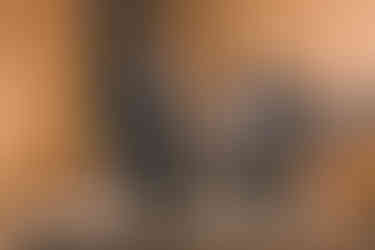'The Seat of Consciousness' premieres at LJMD
- rainworld
- May 12
- 4 min read
Updated: May 16

Presenting a new work for chamber orchestra Sinfonietta Riga, commissioned by Latvia’s Composers Union for the annual Latvia’s New Music Days event, taking place in the 2nd week of May 2025.
I’m deeply grateful to composer Krists Auznieks and Latvia’s Composers Union for commissioning this work, and to Mr. Šnē and Sinfonietta Riga for their fine delivery. The program on May 10 included 2 other premieres by Selga Mence (Ceļš Laiks) and Santa Ratniece (Passacaglia), Linda Leimane’s Ray-bows (2019), and Tvyjōraan (2012) by Mārtiņš Viļums.

This installment of the event honors historical Latvian intellectuals, and the program of the concert on May 10 focused on the personality of Milda Paleviča and the question of whether beauty can be found in intellectualism. A video on the subject by Krists Auznieks can be found here.
I felt that the theme provided an excellent opportunity to create a new work involving the EEG signal. Brain activity during creative processes such as music composition or improvisation has been the topic of my systematic musicology research for about 6 years now- aimed at designing Brain-Computer Music Interfaces (BCMI) for live performance or visual art creation. I’ve been keen to use these tools and techniques in the real world, in front of live audiences.

Sinfonietta Riga has always been open to exploring new territory, and I was especially confident because and I had worked with them in 2019 for the realization of my first EEG piece- Tropos- in which a visualization of my brain signal was projected onto a large screen. That visual was created by the visual wizard Martins Dabolins.
This time I aimed to play a timpani with the EEG signal, at a specific part in the piece. I wore a headband with 8 electrodes and a clinical grade mini amplifier which streamed EEG signals sampled at 500Hz into a computer via a USB cable. The EEG signals were transformed using an original BCMI algorithm into MIDI, which controlled the density of rhythmic impulses in a DAW, then played through a bass woofer speaker cone placed face down on the drumhead of a 26” timpani.
This setup allowed me to modulate from sparse rhythmic hits to a roaring tremolo sound on the timpani by modulating my brain signal. This setup was inspired by Alvin Lucier’s landmark EEG piece “Music for Solo Performer” which premiered in 1965.
During rehearsals I decided to place sleigh bells into one of the speaker cones to make the interaction more obvious, because the rumbling of the timpani alone was rather boomy.

This BCMI algorithm was based on original research, and was developed to detect expressive intent (ranging from exciting to relaxing) in musicians actively playing their instruments. This means that someone using this BCMI can consciously control any assignable MIDI parameter by modulating their expressive intent. This takes some practice, and involves setting pattern-detection thresholds for each individual and setting (every brain and environment is different). In my experience testing the system with many people, the time it takes to learn to use this BCMI intentionally varies from 10 minutes to 2 hours. I previously developed an extended version of this system (Neurosynth) with 16 EEG metrics mapped to MIDI/CV controllers for an Erica Synths Garage residency. So I was excited to have a chance to implement this BCMI system in a new orchestral work. I decided to keep it very simple, and to play a small role in the piece, willfully manipulating only one parameter- rhythmic density on timpani.
Images of the concert (Photos by Kaspars Zaviļieskis and Oskars Upenieks).
The music itself is a kind of emotional dramaturgy on the creative and intellectual processes. It is a battle between the heart and the head. It starts with several seeds of ideas growing and dying, culminating with tension into a sense of profundity fixated on a single mystery. It then breaks into a tightly rhythmic passage, a dance of highly analytical thought. Finally, in defiance, the mystery returns with more tension than before. There is a fight between the intuition and the intellect before a final merging of the two- they don’t resolve perfectly, but with a strong understanding of each other’s part of a dense and complex whole.
The strings are shapeshifting in increasing complexity behind melodic phrases and deep chords outlined in the winds and brass, with heavy accents on percussion. The “shapes” drawn by the strings are achieved by starting in unison then splitting apart at different rates of glissandi, up to a minor third from the starting point. A microtonal cluster is held for a moment before coming back together to the starting point, also at different rates of glissandi. Several shapes of different sizes are superimposed upon each other, played by specific groups of string players, and momentarily form chords at their onsets and exits. The image below describes how this is constructed. These moments become more juxtaposed with the material in the winds and percussion towards the ending.

In sum, the first sounding of The Seat of Consciousness was a special - the experience of participating in rehearsals using the BCMI timpani was fascinating, and standing on stage with the orchestra during the premiere was frightening yet emotionally fulfilling. All technical matters ran smoothly with the EEG system and BCMI software, which gives me confidence to press forward with more elaborate interactions with both sound and visuals when the next opportunity arises.




































Comments